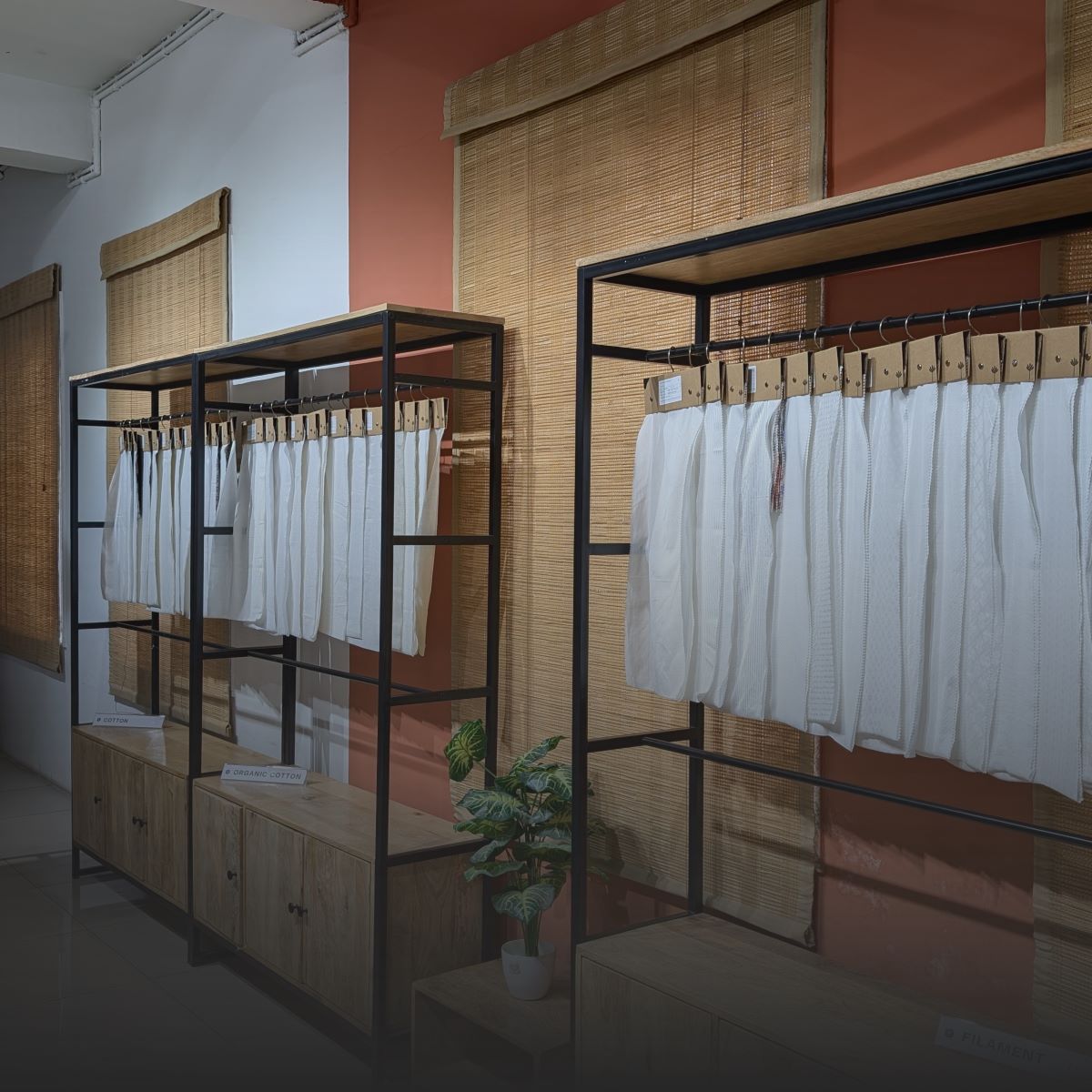1. Introduction to Business Plans for Clothing Brands

It may be exciting to start a clothing business, but you need a solid plan to make it successful. A good business plan helps you figure out what to do, get investors, and grow your brand. In 2025, the fashion world is moving fast, so your plan needs to keep up. Don’t worry; we will walk you through it step by step. Let’s get started and make sure your clothing business is set for success.
Also Read: How to Build an Online Clothing Business Store
2. Executive Summary: The Big Picture

The executive summary is the first part of your business plan, but it's usually written last. It's a brief overview of your entire plan and should highlight your brand's key points. It should cover:
- Your Brand's Mission and Vision: What is your clothing brand about? What problem are you solving for your customers?
- Your Unique Selling Point (USP): What makes your brand different? Are you focusing on eco-friendly materials, size inclusivity, or sustainable production?
- Financial Goals: What are your revenue and profit targets for the next 3-5 years?
Think of this section as a short pitch to potential investors or partners. It should be clear and simple and show why your brand is worth investing in.
3. Business Description: Define Your Clothing Brand

This section gives a closer look at your clothing business and explains what differentiates it from others. Here's what you should include:
Niche and Brand Identity: What type of clothing are you selling? Is it streetwear, formal wear, activewear, or something else? Who is your target audience? (Are you focusing on fashion-forward Gen Z or busy working professionals?) Also, describe your clothing style.
Your Brand's Purpose: Why did you start your brand? Are you passionate about sustainability, creativity, or making stylish clothing affordable and accessible for everyone?
Business Model: How will you sell your clothing? Will you have an online store, a physical shop, or both? Will you sell directly to customers or partner with other stores to sell your products?
A clear business description helps you understand who you are and what you stand for, making it easier to stand out in a competitive market. This section is the backbone of your plan.
4. Market Research and Analysis: Understanding the Industry and Competitors

Doing market research is a very important part of your clothing business plan. It helps you understand the industry and your competitors. Here's what to focus on:
Industry Trends: Look into what's currently popular in the clothing industry. For example, are more people buying eco-friendly clothing? Is athleisure (clothes for both exercise and everyday wear) getting more popular? Knowing the trends helps you make sure your brand matches what people want.
Competitor Analysis: Find out who your competitors are. What are they doing well, and where are they falling short? What are their strengths and weaknesses? This can help determine how your brand can stand out and offer something unique.
Customer Demographics: Understand who your customers are. What do they like or dislike? What problems do they face when shopping for clothes? Knowing your customers helps you create products and marketing that meet their needs.
A solid market analysis helps you make smart decisions and shows you how your brand can fill a need in the market.
Also Read: How to do market research and competitive analysis for your fashion business brand?
5. SWOT Analysis: Assessing Strengths, Weaknesses, Opportunities, and Threats

A SWOT analysis helps you understand where your brand stands in the market. It looks at four key areas:
Strengths: What does your brand do well? This could be unique designs, a strong brand identity or a loyal customer base.
Weaknesses: What are some areas where your brand could improve? You may have a limited marketing budget or small production capacity.
Opportunities: What are some chances for growth? For example, you could partner with influencers, or there might be a growing demand for eco-friendly clothing.
Threats: What challenges could hurt your brand? This might include strong competition or an economic downturn that makes people spend less.
By doing a SWOT analysis, you can be better prepared for challenges and take advantage of opportunities to help your brand grow.
6. Marketing Strategy: Building Your Brand and Reaching Your Audience

Your marketing strategy is how you'll promote your clothing brand to the world. Here are the key points to think about:
Branding and Positioning: What is your brand's personality? Is it fun, bold, minimalist, or luxury? Your brand should speak to your target audience in a way that feels authentic and connects with them.
Marketing Channels: How will you reach your customers? Will you use social media, influencers, email campaigns, SEO (getting found online), or paid ads? Choose the best channels to get your brand noticed.
Customer Engagement: It's important to build a relationship with your customers. Plan ways to keep them engaged, like offering exclusive discounts, creating loyalty programs, or building a community where they can interact with your brand.
A good marketing strategy will help raise awareness, generate interest, and drive sales for your brand.
7. Operations Plan: How Will Your Business Run?

The operations plan explains how your clothing business will operate daily. Here's what to think about:
Production and Suppliers: Where will your clothes be made? Will you make them yourself, or will you work with suppliers? Build strong relationships with manufacturers or suppliers to ensure good-quality products.
Inventory Management: How will you keep track of your stock? Consider using inventory management software to monitor orders, shipments, and product availability so you never run out of stock or overstock.
Shipping and Distribution: Will you ship products yourself or use a third-party company to handle the shipping and delivery?
A smooth operations plan helps lower costs, avoid delays, and ensure customers are happy with fast and reliable service.
8. Financial Plan: Managing Your Budget and Resources

A financial plan helps you manage your money and ensures your brand stays on track. Here are the key points to include:
Startup Costs: Estimate how much money you’ll need to start your business. This includes costs for developing products, marketing, inventory and any other expenses to get your brand up and running.
Financial Projections: Create forecasts for your business. This includes predicting how much money you’ll make (profit and loss), how cash will flow in and out of your business, and when you’ll start making a profit (break-even analysis) in the first 3-5 years.
Funding: How will you pay for your brand? Will you use your personal savings, take out loans, get money through crowdfunding, or find investors?
A solid financial plan helps make sure your business stays financially strong and can grow over time.
9. Risk Management and Contingency Plan

In business, unexpected challenges can happen. This section helps you prepare for risks like supply chain issues, changes in customer preferences or economic problems. Here's what you should do:
Mitigate Risks: Try to reduce risks by doing things like working with multiple suppliers or saving money for emergencies. This way, if something goes wrong, you’re more prepared.
Stay Flexible: Be ready to adapt if things change. Being able to adjust quickly can help you overcome challenges.
A strong risk management plan helps your clothing brand stay strong and keep running smoothly, even when things don’t go as expected.
10. Appendices: Supporting Documents

In the appendices section, you can add extra information backing up your business plan. This might include:
- Market research data
- Product photos or prototypes (samples of your clothes)
- Supplier contracts or partnership details
- Financial spreadsheets
Adding these documents makes your plan more credible and helps investors, partners or anyone reading it understand your business better.
Conclusion
Creating a clothing business plan is key to turning your ideas into a successful brand. By carefully planning everything, from understanding the market to setting financial goals, you set up your business for growth and success. Stay focused on your goals, adjust to changes in the market and keep improving your plan as your business grows. With a solid plan, you're one step closer to making your clothing brand a reality in 2025.
FAQ’s
1. How do I create a clothing business plan?
To create a clothing business plan:
- Write an Executive Summary (overview of your brand and goals).
- Describe your business (target audience and business model).
- Do Market Research (understand trends and competitors).
- Conduct a SWOT Analysis (assess strengths, weaknesses, opportunities, and threats).
- Plan your Marketing Strategy (how to promote your brand).
- Create an Operations Plan (how your business will run).
- Develop a Financial Plan (startup costs, projections, and funding).
- Prepare a Risk Management Plan (identify risks and solutions).
- Add Supporting Documents (like research and financial details).
2. Is the clothing business profitable in the future?
Yes, the clothing business can be profitable. The global apparel market is expected to reach $2.04 trillion by 2029. Trends like sustainable fashion, athleisure and size inclusivity are driving growth. Success depends on understanding your customers and adapting to market changes.




